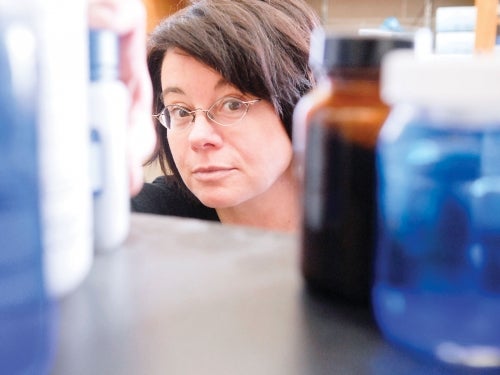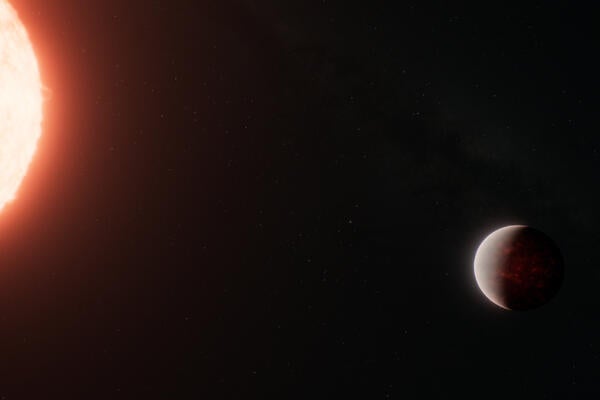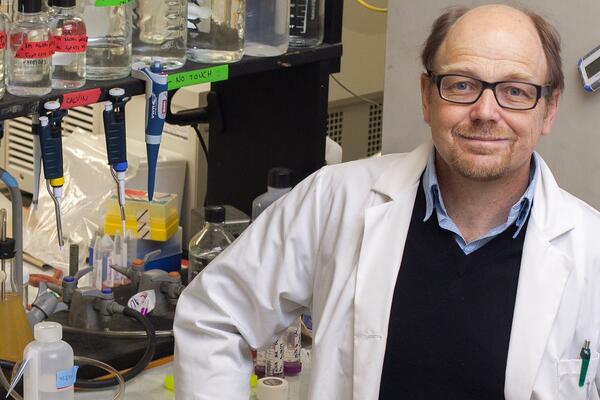
Waterloo breakthrough in electric car battery research
Cheaper lithium-sulphur battery may one day take electric cars three times further, says Waterloo researcher

Cheaper lithium-sulphur battery may one day take electric cars three times further, says Waterloo researcher
By Staff University of WaterlooAn ultra-thin nanomaterial is at the heart of a major breakthrough by Waterloo scientists who are in a global race to invent a cheaper, lighter and more powerful rechargeable battery for electric vehicles.
Chemistry Professor Linda Nazar and her research team have discovered that a nanosheet of manganese dioxide can be used in a lithium-sulphur (Li-S) battery to dramatically boost its performance. The low-cost Li-S battery can theoretically power an electric car three times further than current lithium-ion batteries for the same weight.

“This is a major step forward and brings the Li-S battery one step closer to reality,” said Nazar, who also holds the Canada Research Chair in Solid State Energy Materials and is a 2014 Thomson Reuters’ Highly Cited Researcher. Their research paper appeared recently in Nature Communications.
The surface of the manganese dioxide nanosheet essentially transforms the sulphur cathode of a Li-S battery into a high-performance cathode that can recharge more than 2,000 times. Cathodes and anodes are the two electrodes on a battery, separated by an electrolyte solution.
Sulphur, which is an extremely abundant, relatively light and very cheap battery material, historically hasn’t worked as a cathode material because it dissolves into the electrolyte solution, as the battery discharges.
Earlier published research by Nazar found that metallic titanium oxide could work to stabilize the sulphur, but the research published this week shows that nanosheets of manganese dioxide work even better. The main goal of this paper is to explain the mechanism at work.
“You have to focus on the a fundamental understanding of the phenomenon before you can develop new, advanced materials,” said Nazar.
The chemical reaction that stabilizes the sulphur is similar to a chemical process discovered in 1845 during the golden age of German sulphur chemistry. “Very few researchers study or even teach sulphur chemistry anymore,” said Nazar. “It’s ironic we had to look so far back in the literature to understand something that may so radically change our future.”
Postdoctoral research associate Xiao Liang, the lead author, and graduate students Connor Hart and Quan Pang are currently investigating other oxides to find the best sulphur retaining material.
BASF International Scientific Network for Electrochemistry and Batteries funded the research. The paper’s co-authors include Arnd Garsuch and Thomas Weiss of BASF.

Read more
Here are the people and events behind some of this year’s most compelling Waterloo stories

Read more
Discovery of a thick atmosphere on a lava world reshapes our understanding of rocky exoplanets

Dr. Brian Dixon, professor of biology at the University of Waterloo says there is a link between cold weather and getting sick. (University of Waterloo)
Read more
Waterloo researcher shares why we get sick when the mercury dips
The University of Waterloo acknowledges that much of our work takes place on the traditional territory of the Neutral, Anishinaabeg, and Haudenosaunee peoples. Our main campus is situated on the Haldimand Tract, the land granted to the Six Nations that includes six miles on each side of the Grand River. Our active work toward reconciliation takes place across our campuses through research, learning, teaching, and community building, and is co-ordinated within the Office of Indigenous Relations.